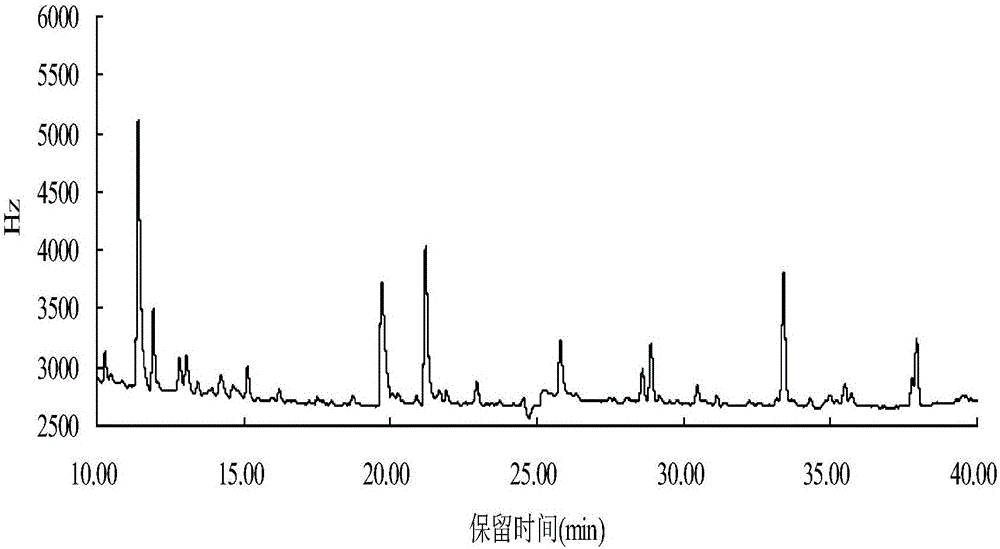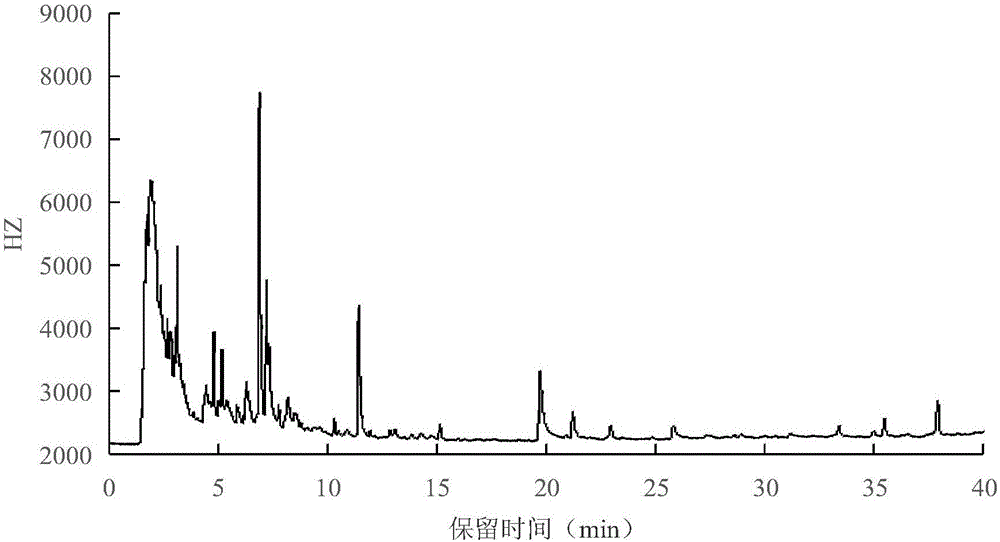Method for quantitatively analyzing perfluorocarboxylic acid compounds through precolumn derivatization-gas chromatography
A gas chromatographic separation and perfluorocarboxylic acid technology, which is used in analytical materials, measuring devices, material separation, etc., can solve the problems of low detection cost, high detection limit and high detection cost, and achieve strong anti-interference ability and high precision. , the effect of low detection limit
- Summary
- Abstract
- Description
- Claims
- Application Information
AI Technical Summary
Problems solved by technology
Method used
Image
Examples
Embodiment 1
[0028] Prepare standard curve
[0029] (1) Configuration of standard samples: Accurately measure nine kinds of samples, including chromatographically pure PFBA, PFPeA, PFHxA, PFHpA, PFOA, PFNA, PFDA, PFUnA and PFDoA, and use n-hexane as the solvent to configure them into 0.001mol / L PFCAs standard stock solution. Accurately pipette 10mL of each of the nine PFCAs standard stock solutions into a 100mL volumetric flask, and dilute to 100mL with n-hexane to prepare a 0.0001mol / L mixed standard mother solution containing nine PFCAs. At the same time, prepare 0.0001mol / L 2,4-difluoroaniline (DFA) solution and N,N'-dicyclohexylcarbodiimide (DCC) solution with n-hexane. The prepared solutions above were stored at 4°C in the dark. Before use, accurately weigh 2 μL, 4 μL, 6 μL, 8 μL and 10 μL of PFCAS mixed standard mother solution, add 2,4-DFA solution and DCC solution, and the molar ratio of PFCAs mixed standard, 2,4-DFA, DCC It is 1:100:25. Use n-hexane to make up the volume in a ...
Embodiment 2
[0036] Detection of PFCAs Compound Type and Content in a Sewage Treatment Plant in Ningbo
[0037] (1) Sample preparation: collect water samples from a sewage treatment plant in Ningbo, filter the water samples to be tested through a 0.45 μm aqueous microporous membrane, adjust the pH value to 6 with 1mol / L NaOH, and then carry out solidification. phase extraction. Install the WAX cartridge, and use 4mL methanol solution containing 0.5% ammonia water, 4mL methanol, and 4mL high-purity water to pass through the WAX cartridge sequentially for activation and equilibrium. Pass the filtered water sample through the WAX column at a flow rate of 5mL / min. After the sample passes through the column, wash the column with 4mL of 25mmol / L sodium acetate solution, and continue vacuuming to remove water; Rinse with methanol and 4mL methanol solution containing 0.5% ammonia, and collect in a stoppered glass graduated centrifuge tube. The eluent was blown off with high-purity nitrogen...
Embodiment 3
[0046] Determination of the types and contents of PFCAs in a surface water sample in Ningbo
[0047] (1) Sample preparation: Water samples were collected from a surface in Ningbo, filtered through a 0.45 μm water phase microporous membrane, and then adjusted to pH 6 with 1 mol / L NaOH, followed by solid-phase extraction. Install the WAX column, and use 8mL of methanol solution containing 0.5% ammonia water, 8mL of methanol, and 8mL of high-purity water to pass through the WAX column in sequence for activation and equilibrium. Pass the filtered water sample through the WAX column at a flow rate of 8mL / min. After the sample passes through the column, wash the column with 8mL of 30mmol / L sodium acetate solution, and continue vacuuming to remove water; Rinse with methanol and 8mL methanol solution containing 0.5% ammonia, and collect in a stoppered glass graduated centrifuge tube. The eluent was blown off with high-purity nitrogen gas (50°C constant temperature water bath) t...
PUM
 Login to View More
Login to View More Abstract
Description
Claims
Application Information
 Login to View More
Login to View More - R&D
- Intellectual Property
- Life Sciences
- Materials
- Tech Scout
- Unparalleled Data Quality
- Higher Quality Content
- 60% Fewer Hallucinations
Browse by: Latest US Patents, China's latest patents, Technical Efficacy Thesaurus, Application Domain, Technology Topic, Popular Technical Reports.
© 2025 PatSnap. All rights reserved.Legal|Privacy policy|Modern Slavery Act Transparency Statement|Sitemap|About US| Contact US: help@patsnap.com



